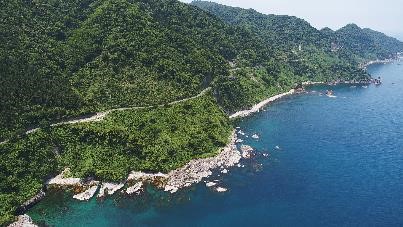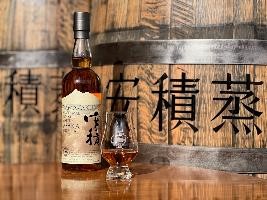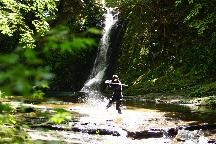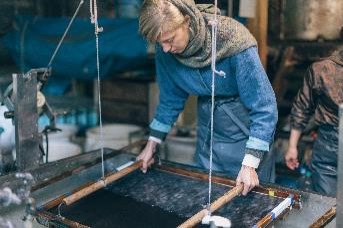
Japan National Tourism Organization (JNTO)
[JNTO] In Search of Nature’s Bounty: Japanese Gastronomy Tourism Expands the Mind and Delights the Tastebuds
2023.12.08
Press release
PDF ver.

Japan’s islands stretch for thousands of kilometers from north to south, blessing the country with a wide variety of climates that foster diverse food cultures - each of which boasts a fascinating history. The bounty of the nation’s mountains, valleys, rivers, and seas differs from region to region, giving tourists myriad opportunities to get to the heart of Japan through their stomachs. That’s the essence of “gastronomy tourism,” a form of travel focused on food nurtured by local ingredients, customs, and traditions. In many cases, it also includes regional alcoholic beverages, another area in which Japan excels thanks to its abundance of rivers that have provided brewers and distillers with crystal-clear water for centuries. Here are three ways to discover the very best of Japan’s gastronomical wonders firsthand:
Delight in Tango Barazushi, the “Sushi Lasagna” of Kyoto by the Sea
In the northern part of Kyoto Prefecture, just over two hours by train from Japan’s ancient capital, lies an area affectionately known as “Kyoto by the Sea.” Overlooking the Sea of Japan, it’s long been associated in Japanese mythology with Toyouke, the deity of food. Appropriately, it’s also long been an abundant source of diverse ingredients and Japanese culinary traditions like Tango Barazushi, a festive type of Sushi that originated on the Tango Peninsula.
Tango Barazushi is prepared in a Matsubuta (a type of wooden box), inside which a layer of vinegared Sushi rice is spread first. Then comes the most important part: crumbly bits of mackerel, which is so abundant in the waters of Wakasa Bay around Tango that the roads connecting it to Kyoto have been nicknamed Saba Kaido, or “Mackerel Highway”. The fish is braised in a sweet and salty sauce to season and preserve it as mackerel loses its freshness quickly. It’s a common misconception that Sushi means “raw fish,” when, actually, anything atop specially seasoned rice can be called Sushi, such as Tango Barazushi where the rice and mackerel are topped with other ingredients such as Shiitake mushrooms, red ginger and/or shredded egg crepe. The exact recipe for this intriguing culinary creation differs from household to household; in many cases, such recipes have been passed down through generations and are prepared during times of celebration.
The Sushi is meant to be divided and eaten with a wooden spatula by family and friends, creating precious memories and forging lifetime bonds over a delicious meal. Interestingly, when removed from the Matsubuta, the layered Barazushi bears an uncanny resemblance to lasagna, hence its unofficial nickname ‒ “Sushi lasagna.” One Facebook video showing Tango Barazushi being taken out of the box has had over 280,000 views because its unique shape offers brand-new ways to enjoy one of the most famous Japanese dishes. Visitors can taste this delightful cuisine at Torimatsu, a renowned local restaurant, and even take it with them in Bento (packed lunch) form, available at Kyoto stations as Tango Barazushi Ekiben (a box lunch sold on a train or at a station). Besides the restaurant Torimatsu, a Barazushi making and eating, of course, workshop is also available at Centrale Hotel Kyotango. If you ever have the chance, treat yourself to some Tango Barazushi in its birthplace, Kyoto by the Sea.
Experience Japan Through All Five Senses in Kagoshima
Katsuobushi is the very definition of Umami, that savory and oft-elusive “fifth taste.” It is made from the bonito fish, which in Kagoshima’s Makurazaki City famously come in the Honkarebushi variety prepared via repeated fermenting and sun-drying. The result is incredibly tough meat that can be shaved off to create the savory flakes of flavors without which Japanese cuisine would essentially not exist. Simmering the Katsuobushi with other ingredients and seasonings creates a Dashi stock that shows up in everything from Miso soup to hot-pot dishes like Shabu-shabu, noodle broth and other dishes.
A great way to venture into the world of Katsuobushi is during the upcoming 2024 Fire & Smoke Gastronomy Tour that will be held in Kagoshima Prefecture. It will include a visit to Nishimura Asamori Shoten, a manufacturer of bonito flakes. Makurazaki Katsuobushi, proud of some 300 years of history, has acquired a regional collective trademark, which means the brand is one of the most distinguished kinds of Katsuobushi in Japan. And furthermore, Nishimura Asamori Shoten is the recipient of numerous distinctions such as the Minister of Agriculture, Forestry and Fisheries Award. Its manufacturing process is normally closed to the public, but even once Fire & Smoke ends, visitors to the region will have a chance to book a custom factory tour or try their hand at making bonito flakes at the Makurazaki Fish Center. The center also sells Katsuobushi, which make for great souvenirs.
Another highlight of the tour will be a southern Kyushu lunchtime feast at Mt. Ono, which offers panoramic views of one of the largest tea plantations in Japan and the imposing Mt. Kaimon volcano, known as the Fuji of Satsuma (“Satsuma” being the historic name for the surrounding area.) Also of interest is a dinner prepared by a world-renowned chef and a Japanese tea experience with an award-winning tea farmer where guests will be able to compare different varieties of tea and make their own Hojicha made from roasted green tea leaves. Custom-made tours with lunch at Mt. Ono and the tea-experience will continue to be available after the event.
Participants will also have the opportunity to experience Japanese whisky and Shochu at the new Satsuma Shuzo distillery. The secrets of Shochu, Japan’s hard, distilled spirit, are revealed at Meijigura, Satsuma Shuzo’s factory and museum, which showcases the distillery’s traditional production methods dating back to the Meiji Period (1868-1912). The Meijigura tour is also available now outside of the Fire & Smoke event.
Enter the Intoxicating World of Japanese Whisky
Japanese whisky has begun to attract worldwide attention with wins at international competitions like the World Whiskies Awards sponsored by London-based Whisky magazine. As a result, the value of Japan’s whisky exports grew by 21.5% between 2021 and 2022 by Trade Statistics of Japan. One of the most prominent makers of Japanese whisky exists in the Tohoku area (northeastern Japan). It is the Asaka Distillery in Fukushima Prefecture, created by the Sasanokawa Shuzo Sake brewery over 250 years ago and currently located in Koriyama City.
Sasanokawa started making whisky during the post-war period when rice became scarce, motivating the sake makers to branch out to different alcohols. Having endured the ups and downs of the Japanese whisky market, the Asaka Distillery is especially proud of their Cherry Whisky from the 1980s, called "the northern Cherry,” which was once hailed as the best regional whisky from Tohoku.
Asaka owes much of its success to the clear local waters sourced from the Asaka Channel connected to Lake Inawashiro, and to its climate having dramatic temperature changes that are perfect for distilling. The whisky reportedly also matures relatively quickly due to strong westerly winds of the region. Since the Asaka Distillery makes small-batch whisky (produced on a small scale via artisanal methods) each bottle is crafted with the utmost care and attention. On tours of the world-renowned distillery, visitors can learn all these things firsthand by immersing themselves in the world of the famous Western alcohol that Japanese distillers have mastered.
Taste Japanese Delicacies and Traditions Simultaneously
Visitors to Japan can check out numerous locations around the country and join tours where they will experience a side of Japanese cuisine unknown to most people, each bite and sip bringing them closer to a more full-bodied understanding of Japanese history and culture.
Japan Tourism Topics
1. A Glimpse into the Future: Admission Tickets on Sale for Expo 2025 in Osaka, November 30
Expo 2025 in Osaka, Kansai, Japan, which will cover an area of approximately 155 hectares in the city’s Yumeshima district, is scheduled to last 184 days, from April 13th to October 13th, 2025. A total of 153 countries/regions have pledged to participate in the event which will focus on the theme of “Designing Future Society for Our Lives”, it will be a space where 8 billion people from around the world will not only view exhibits but will co-create our future society. Various advance tickets will be on sale from November 30th, 2023 (500 days before opening), through the official Expo 2025 website. Opening ticket allows one entry from the opening day through April 26th, 2025, while the First-half Period ticket allows one entry from the opening day all the way up to July 18th, 2025. They have two types of One-Day ticket which allows a single entry at any time during the course of the event. One of them named “Super Early Bird” will be sold for a limited time, from November 30th, 2023, to October 6th, 2024, and the other one named “Early Bird” is now on sale until April 12th, 2025. JNTO also starts to offer information regarding Expo 2025 on the special site at https://www.japan.travel/en/ex
2. Explore a Modern Urban Oasis for Business and Lifestyle at Azabudai Hills, Opening November 24, Tokyo
Tokyo’s Minato Ward, known for its affluent, international atmosphere, hosts some of Tokyo’s most famous landmarks, including Tokyo Tower. Azabudai Hills will make its mark when it opens on November 24th in a green space covering 8.1 hectares in the heart of Tokyo. With the concept “modern urban village,” Azabudai Hills consists of facilities that foster both commerce and culture including international offices, gourmet restaurants and a 4,000-square-meter food market, public art galleries, and a luxury hotel by Aman-based group Janu, debuting as the first hotel in Tokyo. Azabudai Hills will also be the new home of the teamLab Borderless Museum, a global hit for its innovative art installations, which will feature many new works to Japan when it opens in February next year. Azabudai Hills aims to be a space that encourages wellness and harmony with nature in living, working, and visiting.
Azabudai Hills
3. Sapporo’s All-in-One Hotel and Entertainment Hub, Cocono Susukino, Opens November 30, Hokkaido
Sapporo is a vibrant and modern metropolis in Hokkaido with plenty of local charm that’s known for its fresh seafood and unique blending of urban sophistication and natural beauty. Cocono Susukino, a new 18-story addition to the city’s skyline opening November 30th, aims to attract visitors with a Cinemas complex, a lifestyle space called Sapporo Stream Hotel, amusement centers, dining facilities and a total of 85 up-scale shops. Directly connected to the subway station in the city’s lively Susukino district, Cocono Susukino is a convenient gateway and entertainment hub day and night for visitors to Hokkaido’s exciting capital and offers quick access to the region’s myriad other attractions like popular ski resorts.
Cocono Susukino
4. Breathtakingly Scenic at Akame 48 Falls in Ninja Training Village, Mie
Just over an hour from Osaka by train or bus is The Akame 48 Falls in Mie Prefecture, discover a seemingly endless natural work of art covering about 3.3 kilometers of a lush valley that represents the chain of scenic waterfalls flowing through the Akame area. Though the number 48 seems specific, actually it isn’t because it means “many” in colloquial Japanese. In fact, there are more than just 48 waterfalls across the stunning seasonal landscape, which visitors can explore on special eco-tours. One of the major attractions in autumn and winter is the “Yugen no Takeakari” light-up event, which illuminates the valley with more than 2,000 intricate lanterns carved from bamboo and is held until January 28th, 2024. Historically, Akame was a strategic area and, according to many historians, it’s where Ninjas originated and trained. Visitors can take part in Ninja training, including the art of stealth and climbing, and can rent Ninja suits to help maximize the thrill and authenticity of the experience.
Akame 48 Falls
5. Creating Tangible Memories with Craft Tours in Echizen, Fukui
The scenic Echizen area in Fukui prefecture clings proudly to its heritage of skilled craftsmanship. Celebrating its impressively productive past, craft tours explore a wide variety of actual workshops where visitors can talk with dedicated craftspeople as they work and share their expert knowledge with the help of interpreters. Echizen Washi, a traditional Japanese papermaking with a history of over 1,500 years, is a national treasure that visitors can learn all about on craft tours. They can also explore historical landmarks such as the Okamoto Shinto Shrine and Otaki Shinto shrine, which showcase Echizen’s rich crafting heritage. Meals featuring local dishes like Echizen’s iconic Oroshi Soba (Soba noodles served with grated radish) are included on these programs. One dining experience is even interactive, as guests have the rare opportunity to make their own Nigiri Sushi before tasting the quality of those masterfully prepared by a skilled chef. Beyond the typical tour, these high-end tailor-made programs that can accommodate two to four people are truly unique experiences that allow visitors to pursue their personal interests and require booking through a travel agency.
Craft Tourism Echizen
Notes:
• Items 4 are based on information from JNTO Partners.
• The above details are correct as of the time of publication, and are subject to change.
If you’d like to download photos and videos of Japan’s tourist attractions, please visit the Japan Online Media Center (JOMC)
For media inquiries, including requests to use photographs, please contact the JNTO Press office at media_inquiry@jnto.go.jp













